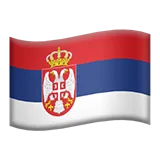In our motion design and video production flow, we are committed to delivering impeccable results. It’s impossible unless the process is transparent for all the participants. That’s why at the start of the collaboration we outline the core steps of our work. If everyone knows what is going on and why, then the result is bound to be impressive.
If you’re going to use motion design to promote your products, you will find these slides useful. We described the 5 stages of motion design projects, and explained why they are crucial for great results.
- Idea & concept
Our motion team works closely with the clients to search for the right visual style and message to convey. This stage includes moodboarding and collecting references. Here we also set aside some time for the first round of experiments with styles.
- Script
The sooner you agree on the script, the better: this way you’ll avoid correcting it over and over again later. The best script is the result of trustful collaboration between the motion design team and the client’s one.
- Storyboard
It helps to understand the visual composition, and any potential difficulties that may arise during production. We always ask clients for detailed feedback on the storyboard, so at the end of this stage it meets clients’ needs and effectively communicates their message.
- Animatic
The animatic shows dynamics and timing of the future work. This stage is perfect to make the final significant changes in the video. Otherwise, it’s going to affect the work time and budget.
- Rendering
Compositing, polishing and rendering stage is the final step in creating a successful video animation or 3D project. At this stage, everything that we have approved in the previous stages takes its final form. Therefore, it is not rational from the budgetary point of view to make changes here.
Our motion design projects: https://jet.style/motion/






